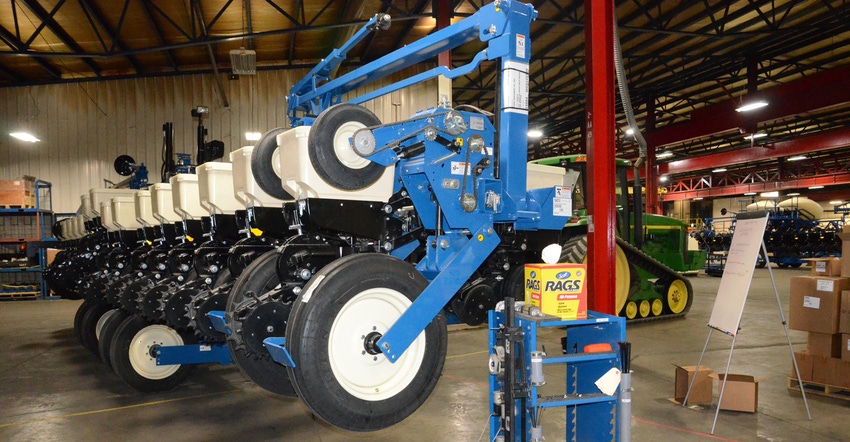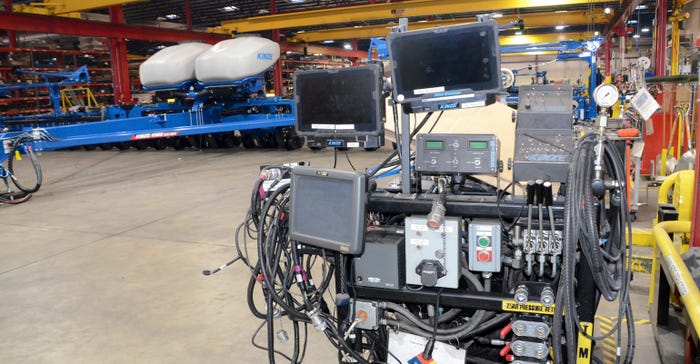December 7, 2020

A specialist must be good, especially with farm equipment. For Kinze, being good means not losing track of customer needs. “We get out and talk to farmers and dealers,” says Brad Niensteadt, senior product specialist. “We like to walk on their dirt versus talking in an enclosed office.”
That customer connection has long been part of the company’s history, but how has that evolved over the years? Niensteadt shares that communication remains important, even as the company has grown. The key is connecting not only with customers, but also with dealers to learn what’s working and what’s not.
For the farm equipment business, companies essentially serve two masters. The dealer who sells equipment has needs; and frankly, if a company doesn't meet them, the equipment may take a back seat to other products for that seller. The farmer, and final user, of the machine also has needs. And meeting those diverse requirements creates challenges and opportunities.
Add in that for shortline equipment makers, the “blame” for failure often falls to the implement, and you can see how these relationships are important. “It’s never the tractor’s fault,” Niensteadt smiles.
Pioneering electronics
That communication is what led to creation of the Blue Drive system, Kinze’s unique and proprietary planter infrastructure that’s powering the top-end versions of its newest machines. Niensteadt explains that challenges with planter control and the need for a better solution for higher-end, electric meter planters meant taking control.
Back in 2014, Kinze opened an electronics division in North Liberty, Iowa, several miles from the home plant. This development center worked through a range of challenges and developed that unique Blue Drive system that uses a simple ethernet cable across the planter for control.
“This is what Kinze has done for years — make it easier to upgrade technology,” Niensteadt says.
 FINAL ONCE-OVER: Before any machine leaves the Kinze factory, it gets a final system check. The multiple monitors on this test bench help testers working with all the different equipment setups at the company.
FINAL ONCE-OVER: Before any machine leaves the Kinze factory, it gets a final system check. The multiple monitors on this test bench help testers working with all the different equipment setups at the company.

It was customer feedback that led to this system that’s designed to get a planter going soon after the farmer fires up the engine. Combine that with the new True Speed high-speed electric meters, and the company is offering high-speed planter tech for 2021.
Yet there’s more to come. Updates like wireless data transfer are in development. For now, as-planted data must be transferred to your favorite management software by USB drive, but Niensteadt shares that updates are in the works.
World-class manufacturing
On an earlier tour Farm Progress took of the Kinze facility a couple years ago, the visit found something you might not expect from a smaller manufacturer — familiar world-class techniques for managing quality, inventory and product development.
Niensteadt, who grew up on an Iowa farm, remembers driving by the plant and seeing what he calls its “lawn ornament,” which is a multistory planter and tractor “on a stick.” But he wasn’t aware of what was behind those factory walls.
“The work we’re doing kind of surprised me,” he recalls. “We are in touch with the customer and dealer constantly.”
That’s been more challenging in 2020, but not impossible. Niensteadt has made some field trips, with social distance. But quality time over the pickup truck bed has kept him and his colleagues in touch with how the new 05 Series planters are performing, and potential future improvements.
“The testing never stops,” he says. “We run machines six and seven days a week. We run planters where we can, even in winter, to work through issues.”
Related: Gain closer look at new tools from Kinze
That testing and development has changed how planters are assembled in the plant. And how those planters arrive at the dealership. “We’ve reduced setup time for the dealer, and we test every machine before it leaves the plant,” he adds.
All planters are put on a test bed and hooked to hydraulics to run for test, and check for any final-build quality issues. “No machine leaves here without going through that test. We’ll even plant with some machines before they go out — with the buyer's permission,” Niensteadt says.
In addition, at random, a machine will be pulled off the shipping line for a more thorough teardown. “We have people from engineering, production and other departments go over a machine in detail,” Niensteadt explains. “If there are issues with the specific machine, they’re fixed and reported back to the specific department involved.”
Keeping up with growing demand for high-performance farm equipment means it must actually perform. For Kinze, that work not only involves engineering and design, but also help from the customer.
About the Author(s)
You May Also Like






